
By Joshua Voss, Assistant Research Professor - Harbor Branch Oceanographic Institute at Florida Atlantic University
June 10, 2017
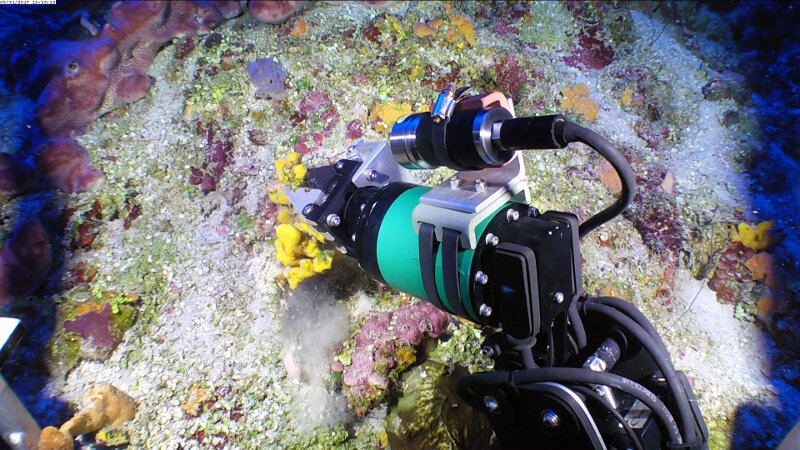
The ROV sample collection skid, including the manipulator, is the key to successful specimen sampling during our mission. Samples can vary widely in their structural integrity. Some pop off the underlying substrate as entirely intact individuals while others, like this yellow Halichondridae sponge, easily tear to allow us to collect one portion of the sponge while leaving the rest to heal and regenerate. Image courtesy of Cuba’s Twilight Zone Reefs and Their Regional Connectivity. Download larger image (jpg, 624 KB).
As the coral lead for this leg of the expedition, my primary responsibilities include identifying and cataloguing the diversity and abundance of hard corals (Scleractinians), black corals (Antipatharians), soft corals (Octocorals), and other cnidarians such as anemones and hydroids. With my knowledgeable and enthusiastic Cuban scientific counterpart, Juliett González Méndez, a coral researcher and specialist in marine protected areas for Cuba’s National Center of Protected Areas (CNAP), we spend long hours with our eyes fixed to the outstanding images from the live high-definition video feed, scanning intently for every coral we can find. In addition to characterizing the coral communities, another major research focus for this expedition and my research team is assessing coral connectivity between Cuban, Floridan, Northwest Gulf of Mexico, and Belizean reefs. You can read more about this Cooperative Institute for Ocean Exploration, Research and Technology-funded study’s goals in the mission log from my graduate student Michael Studivan on May 23.
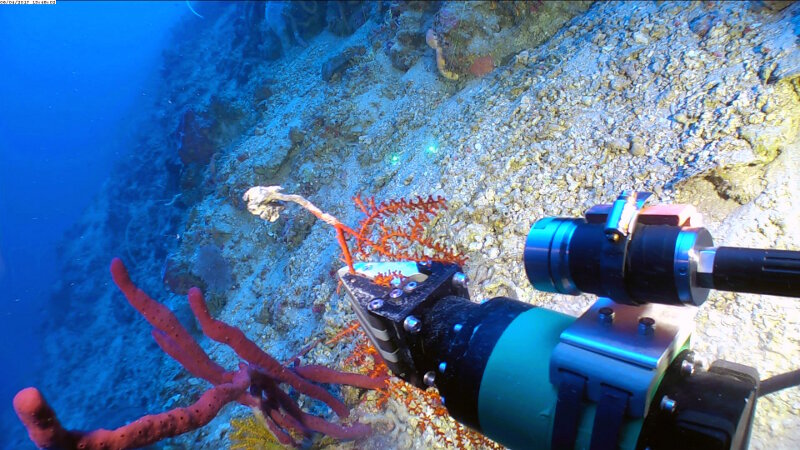
The twisting motion of the manipulator’s wrist allows us to rotate and efficiently remove stalked, branching octocorals, such as this Swiftia. Image courtesy of Cuba’s Twilight Zone Reefs and Their Regional Connectivity. Download larger version (jpg, 568 KB).
Beyond my role as a coral scientist, I’m also tasked with remotely operated vehicle (ROV) collections on this leg, taking control of the manipulator to sample a vast array of invertebrate animals and plants from the seafloor. The Mohawk ROV (see Jason White’s mission log from May 19) is owned by the National Marine Sanctuary Foundation and operated by the University of North Carolina Wilmington Undersea Vehicles Program. The sample collection skid attachment was built by Florida Atlantic University’s Harbor Branch Oceanographic Institute to mimic some of the collecting capabilities of Harbor Branch’s Johnson Sea Link submersibles, albeit on a much smaller scale. This platform offers amazing capabilities in a highly effective, flexible, nimble package that can be shipped or trailered anywhere in the world.
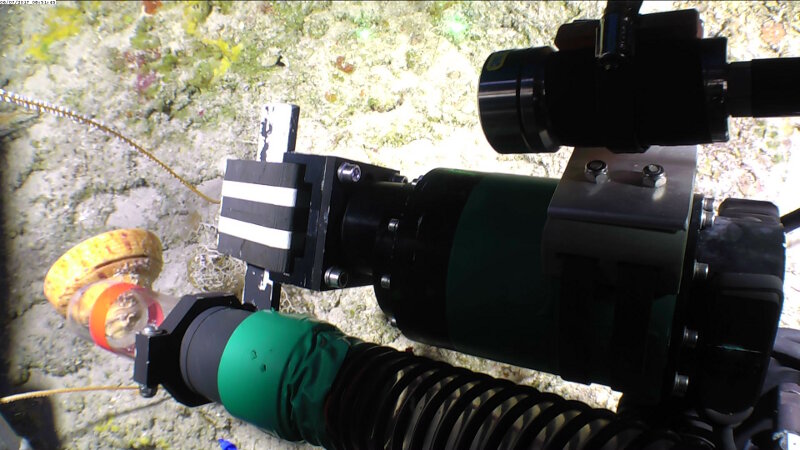
For some species, like this slit shell snail, Entemnotrochus adansonianus, suction collection is preferable to the claw. Image courtesy of Cuba’s Twilight Zone Reefs and Their Regional Connectivity. Download larger version (jpg, 352 KB).
While sampling corals for taxonomic identification and molecular analyses may be the primary focus of my team’s research, on this cruise coral collections account for just 20 percent of total ROV samples collected. Passionate pleas for collections of sponges and algae come from our excited colleagues each time they spot an organism they believe may be new to science, or at least a new record for Cuba. On a cruise where nearly every dive site is being observed for the very first time, our scientific curiosity and desire for samples always exceed what can feasibly be accomplished in a given three to four-hour dive. Therefore scrupulous sample selection and rapid, efficient collecting are paramount. During our time in Cuba, at our best we have collected 22 samples during a single ROV dive.
The variety of sample sizes, shapes, and robustness require creativity and careful decision making to determine whether a forceful approach or a deft touch will be the most effective collection technique. There is always a risk of losing a sample to the depths, or worse, damaging the manipulator itself and compromising future collections. Often tense moments pass as the manipulator’s jaws close on a delicate coral specimen, or as large sponge sample is cautiously adjusted to fit inside the ROV’s "bio box." Once a sample does fall into place and is safely stowed, our exuberant team often breaks into songs and cheers...while I breathe a massive sigh of relief.
With the keen eyes of our research team, pinpoint positioning of the R/V Walton Smith by our captain Shawn Lake and first mate Stuart Bell, and expert piloting of the Mohawk ROV by Lance Horn and Jason White, we have been able to collect an amazing 327 samples during the Cuba’s Twilight Zone Reefs Expedition, eclipsing the 298 total samples that the Mohawk ROV had collected in the previous four sampling missions combined.
I’m also very happy to report that today we successfully completed our ROV operations with the manipulator and tool skid in perfect condition, ready for the next round of exciting explorations and collections in our oceans’ depths.
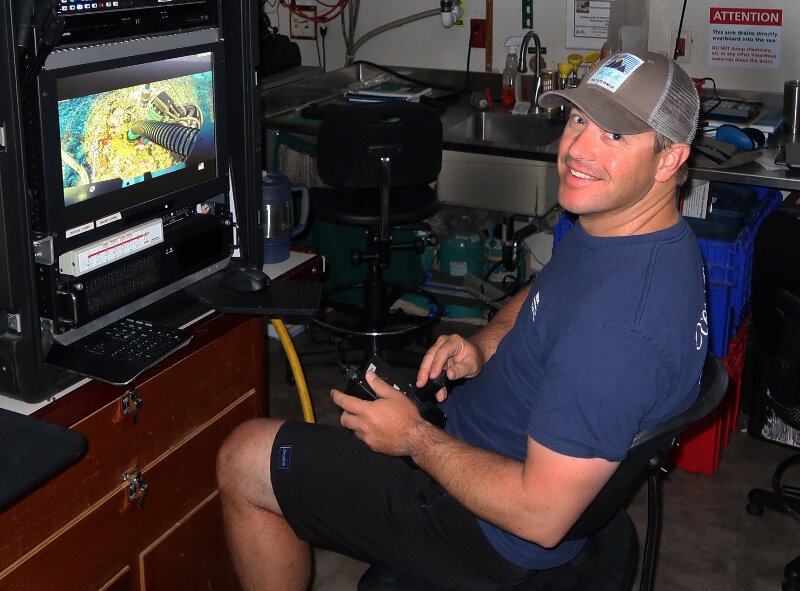
The moment we go into collection mode, the person operating the manipulator is instantly aware that the entire crew (11 other scientists and six crew) are all waiting on them to accomplish their task successfully...NO PRESSURE! Image courtesy of Cuba’s Twilight Zone Reefs and Their Regional Connectivity. Download larger version (jpg, 376 KB).
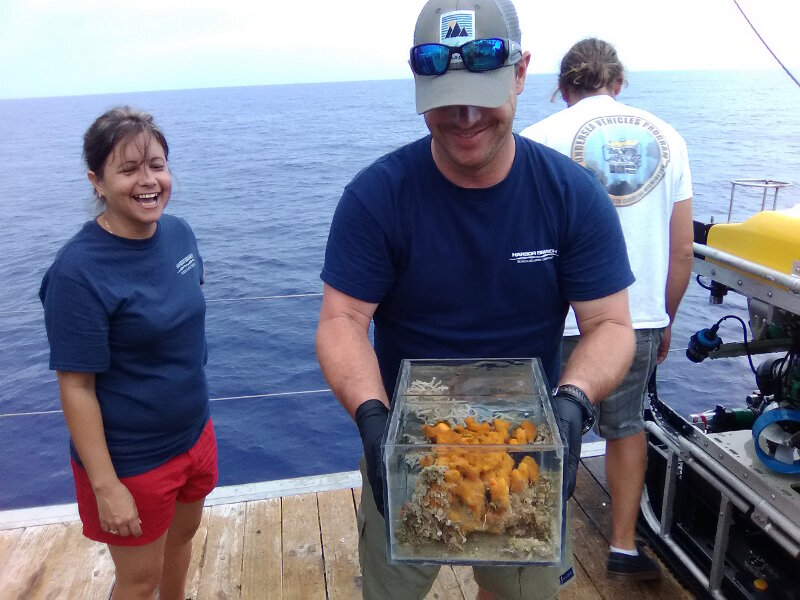
Dr. Voss and Cuban counterpart Juliett González Méndez are clearly very pleased with two of the samples collected during an ROV dive southeast of Cienfuegos: a branching Madracis coral and an orange Verongida sponge. Image courtesy of Cuba’s Twilight Zone Reefs and Their Regional Connectivity. Download larger version (jpg, 1.2 MB).